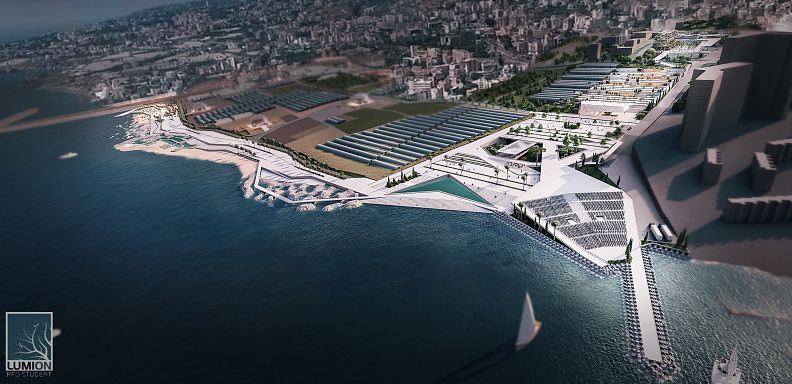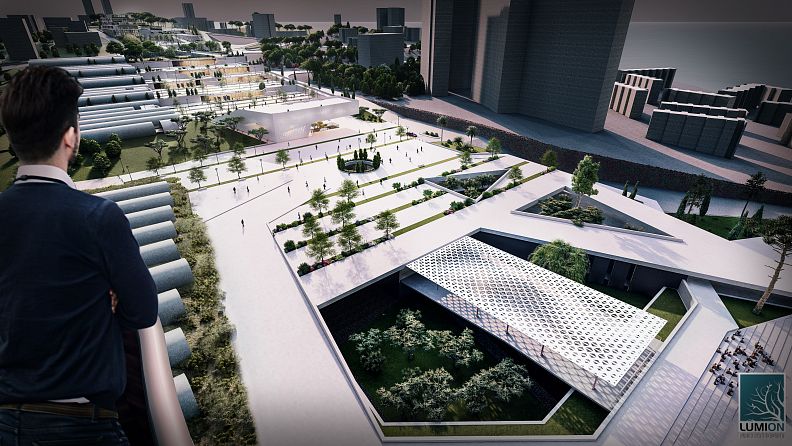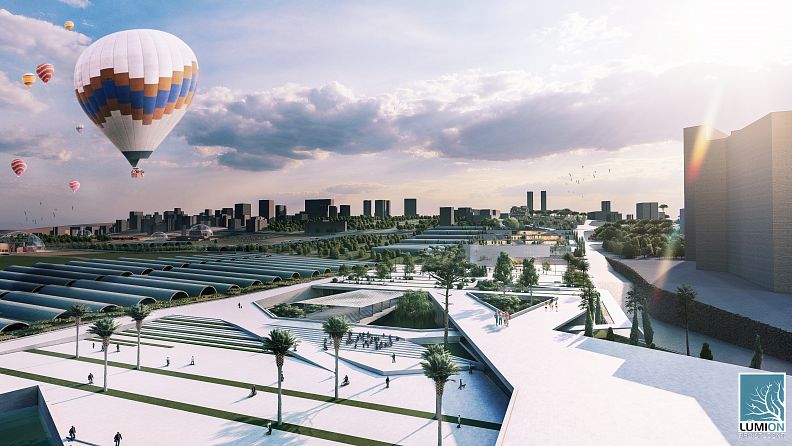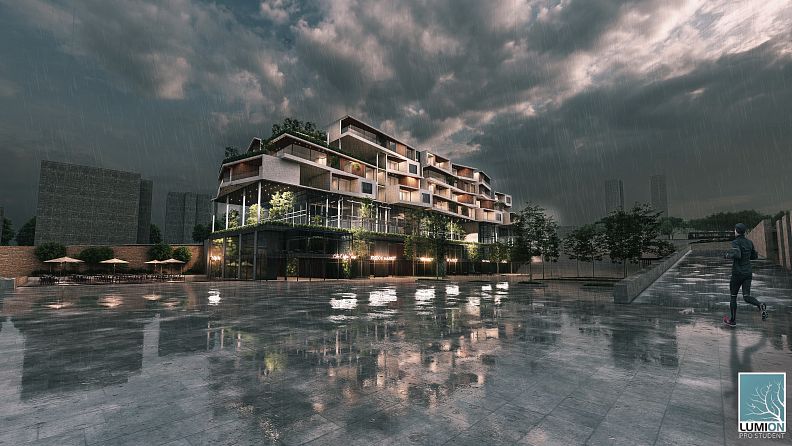Let there be life … Again

Project idea
Tabarja is a city with an identity crisis, lacking of history yet filled with myths and legends. Its location is strategic for it is the gate to the province of Keserwane, with a view overlooking the bay of Jounieh and Beirut in the background. Due to many events that took place through time, and the urban fracture created by the highway and the tram line, its western coastal plane, called “Wata Slam”, is not valued and not visited at all by its inhabitants: The city turns its back to its biggest potential: The Sea. Instead, agricultural tents stand paralleled to each other, making it one of the very rare planted coasts in Lebanon. Lately, many discoveries were made during an excavation, as archaeology was found, showing prehistoric housing and a Latin cathedral foundation: the myth is staring to unveil itself.
Given all of the above, the project’s aim is to regenerate this town by inserting an architectural intervention that would enhance all its potentials, respecting its actual fabric.
Two main strategies, from East to West, and from South to North.
First, a flowing project starting on the local landmark – the Intabli roundabout (East), striking down to the sea (West), creating public spaces in communication with the agricultural tents on its way down, to reunite and open the town to the Mediterranean. In this intervention, a museum celebrating the myth of the Phoenicians will be implemented, showing a part of itself and hiding the rest underground, and a concert arena on the starting point of the bay of Jounieh will conclude with a splendid view. Second, a local market taking advantage of the rich harvest of Wata Slam, allowing people to reconnect with this land that was always there, but seen from afar and never visited. Third, an elevated archeology museum that will display the latest discoveries, with a large tier in front of the foundation of the Latin cathedral found in 2016.
A rhizome shaped connection will link the important urban poles: The old town on the northern bay, the Intabli piazza, the coast, and the new flowing district, going through the agricultural tents and creating public spaces in the heart of the agricultural lands, including workshops and tourist houses. All to invite people to an area they didn’t even know existed. The rhizome will be open to link more poles, for more interventions in the future.
A functional and very sustainable project that would celebrate the location of Tabarja, its mystical and conventional history, giving it back its lost identity.
Project description
The project consists mainly of an urban flow where architectural and landscape interventions will take place to invite locals and strangers, and connect the city to the sea.
On the actual city center, a commercial pole will be implemented, including a residential building that will represent the façade of the project.
On the abandoned tram line, a station will be prepared for future circulation, surrounded by a 6000 sqm public garden. As the flow continues downwards, coffee shops merged with themed libraries (biblio cafés) will take place, enhancing culture and social life.
After that, the museum of the myths and legends is located.
It is divided into two parts: The first welcomes foreign countries to expose their own proper myths for a temporary period of time. While the other part of the museum narrates through architecture, the commonly known Phoenician myth in Lebanon, Adonis & Ashtarout.
The visitors begin the tour by descending a long ramp, that regressively impels sounds from our present time to the Phoenician era, landing into the birth cave of Adonis, where the tree of life, surrounded with water and well lit by a zenithal opening, will stand. The tour proceeds to another ramp symbolizing Adonis’ stay in hell with Persephone. Then comes the choice Adonis decided to face; to live 3 months in the darkness and the 9 remaining ones with Ashtarout, the love of his life. Here, the visitor has a series of rooms to optionally enter, equipped by projections, laser lights enhancing the symbolization of the feelings one can encounter.
The hunt of Adonis will be represented by an open garden, followed by a hard ramp (12%), to show the fight he did with the boar. The landscape will shift from green conifers to red leaves in this area. At the end of the fight, a weeping willow will stand, representing the mourning of Ashtarout.
The death of Adonis will be portrayed by a long corridor, slithering the visitors with darkness, leading them to a mirror sliding door, illustrating one’s self judgment at one’s death.
The mirror opens to an extraordinary view, the actual horizon, under a rain of lights, representing the infinity of the afterlife. The visitor has then the choice to leave or to repeat the tour : The resurrection of Adonis. The resurrection space is represented by a garden surrounded by a museum's modalities: restaurant, giftshop, with direct access to the parking or the exterior piazza. The resurrection garden is linked to the birth cave through a water wall.
On the shore, a concert arena with a capacity of 7000 people will overlook one of the most beautiful views in the country: the mounts of Lebanon diving into the sea, with the capital Beirut's Skyline in the background. All the facilities of the arena will be implemented in the underground, protected by a breakwater.
On the north of the arena, a seaside promenade will go along the shore, creating public spaces and urban escapes close to the sea … a dream that Tabarja's autochthones had for decades, after their coast was privatized by private investors.
Throughout the agriculture lands, pedestrian roads and bike lines (Car free) will circulate as veins of life. Temporary mystical urban installations and workshop spaces for urban farming, plantation and sustainability will be spread to keep the area active and alive.
Finally, tourist houses will be merged with the agriculture tents, making a tourist's stay in Tabarja on of a kind, and making of Tabarja a hub for the visitors.
Technical information
Reinforced Green Concrete (Flow)
Steel structure (Residential building floors 2 to 6)
Steel C-type cantilever structure (Museum)
Breakwater (Arena)
Green Roofs (Residential building)
Solar Panels (Residential Building)
Wood Structures (Tourist Houses)







